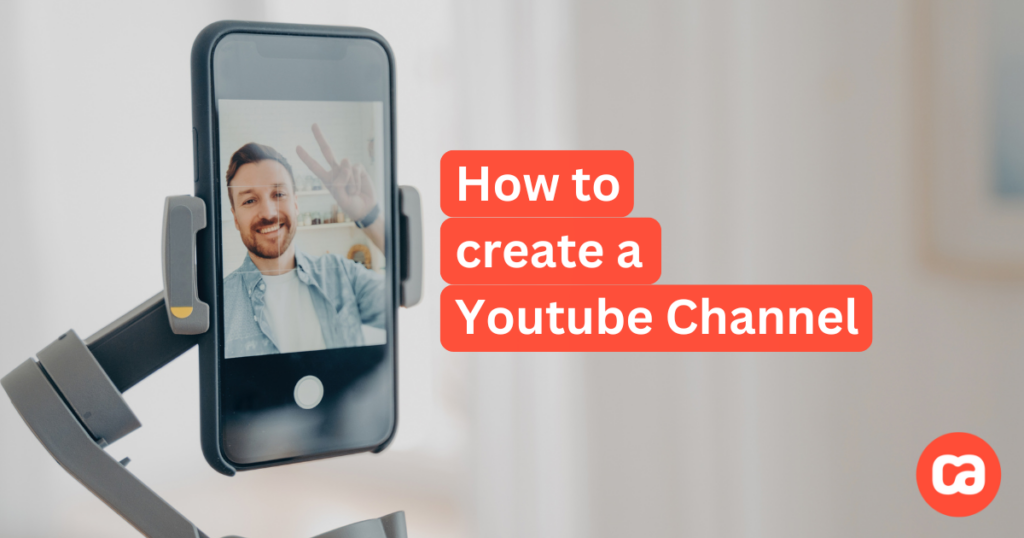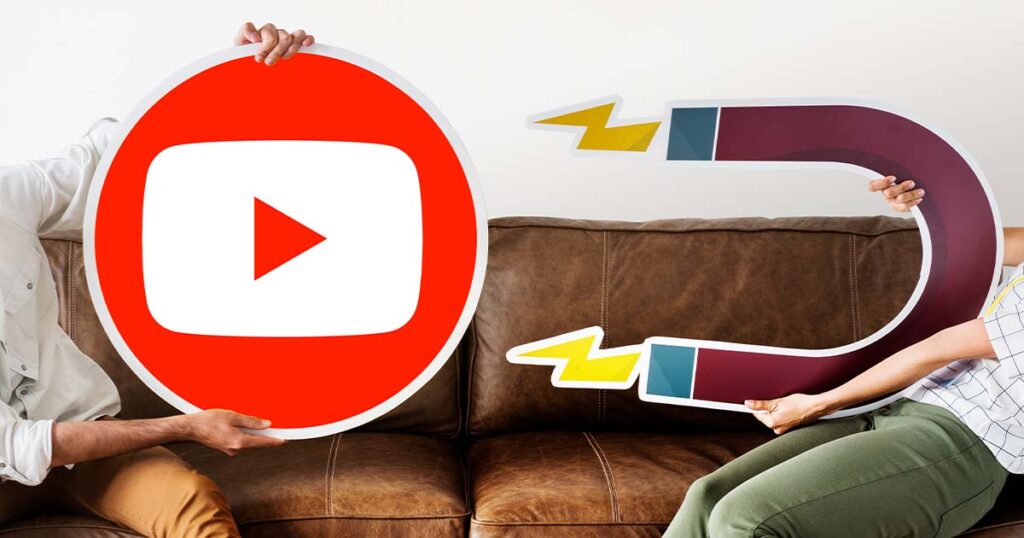Not sure where to start when it comes to creating a YouTube channel? Believe it or not, you’re not the only one. We all hesitate to start something new because we know our first attempt won’t be perfect. Luckily, the team at Creative Advisor has put together the ultimate guide to starting a successful YouTube channel.
We might not be able to take away the fear and embarrassment of your first video, but we can at least help set you up for success.
1. Setting Up Your YouTube Channel
Define Your Niche and Audience
Ask yourself:
- What am I passionate about?
- What value can I bring to viewers?
- What topics do I enjoy that I can stay consistent with?
Your niche could be anything from lifestyle vlogs to in-depth tutorials. Narrowing it down will help you stay focused.
Create Your Youtube Channel
- Sign in with your Google account and head over to YouTube Studio to set up your channel.
- Follow YouTube’s prompts for channel customization.
- Choose a channel name that reflects your content and is easy to remember. You can brainstorm with friends, use AI or YouTube name generators like this one from Wix.
- Customize your profile
- Profile photo – Use a photo of yourself or your logo.
- Channel art – Design a banner that represents your content using Canva or Visme.
- Watermark – Add a small logo watermark on your videos to reinforce branding.
- Channel description – Write a short bio about what your channel offers and include social media links.
- Upload an intro video that introduces you and your content.
- Verify your channel for access to features like custom thumbnails and live streaming.
2. Creating Content
Starting to create content can feel overwhelming, especially when you’re taking the leap in making your first video. It’s normal to feel intimidated, but planning your content ahead of time can make a huge difference and reduce that “What do I post this week?” panic.
Plan your Videos into Types
Break it down into categories or video types, this helps simplify your workflow and makes it easier to stay consistent. Start with 2 -3 types of videos and expand from there. Some examples include:
- “How to” – Step-by-step guides that teach your audience how to do something.
- “Day in the life” – Show your daily routine, behind-the-scenes moments, or relatable content.
- Explainers – Break down complex topics in a way that’s easy for your viewers to understand.
Sticking to only a couple of video types means you can perfect making these video types before you move onto the next. You can then brainstorm all the different topics and videos you can create in your chosen video types to make yourself a content plan with dates and topics.
Competitor Research
It’s important to understand what is already out there and what you can do to make yourself unique. It’s also great to understand what is already resonating with your audience.
- Identify 5-10 successful channels in your niche.
- Look for their top-performing videos and note common themes.
- Ask yourself: What value can I add that’s different?
Inspiration from Social Media
Trending topics tend to start out on platforms like TikTok and Instagram first and then trickle over to YouTube. As you start out, being able to spot trends early will give you a better chance of audiences’ discovering your content and sticking around. Never underestimate the value of being the first to start an interesting conversation.
Embrace the Awkward Beginnings
Embarrassment is the cost of entry. Your early videos may not be perfect.. The only way to improve is to create content, learn from feedback, and keep refining.
Avoid Copying
Let competitor research inspire you but don’t feel the need to replicate exactly what they’re doing. Your unique perspective is what makes your channel stand out.
Why Planning Helps Create a Youtube Channel
It might seem strange to map out content ideas in advance, but having a content calendar saves you time and stress. Instead of wondering what to post every week, you’ll have a clear roadmap to follow.
3. Video Production Basics
Producing your videos is where your ideas come to life. It can feel overwhelming at first, but starting with simple tools and refining your process over time will make it easier.
Basic Equipment
Starting with the right equipment doesn’t mean breaking the bank. It can be tempting to invest in the best gear upfront, but it’s more practical to begin with basics and upgrade as you grow.
- Camera – Your phone camera or a webcam is perfectly fine for your first videos. Focus on content rather than equipment.
- Lighting – A ring light or natural light from a window can make a big difference.
- Microphone – Clear audio matters more than visuals—invest in an affordable external microphone once you know you’re committed.
Once you know what video styles work best for you, consider upgrading to a quality DSLR or mirrorless camera and additional accessories.
Thumbnails
Thumbnails are one of the most important tools for improving your click-through rate (CTR). They act as the visual hook that convinces viewers to click on your video. At the start, you might prefer using YouTube’s recommended thumbnail, but keep in mind that these are simply freeze frames from your video and may not be the most engaging option.
- Custom thumbnails can significantly boost CTR by clearly showing viewers what your video is about.
- Use tools like Canva or Visme to create custom thumbnails with text overlays and engaging visuals.
- Many creators use A/B testing to compare different thumbnails over time to see which ones perform best and drive the most views.
Editing Tools
- Use beginner-friendly software like iMovie (Mac), CapCut (mobile), or Windows Video Editor.
- Edit out pauses and add smooth transitions.
Video Length
Aim for 8-12 minutes for general content, but shorter for introductions or Shorts.
4. Publishing and Optimizing Your Videos
Publishing your video isn’t just about uploading it and forgetting about it. Proper optimization improves your chances of being discovered and keeps viewers engaged.
Descriptions and Keywords
- Write a detailed description that explains the video’s purpose and provides additional context for viewers.
- Include 2-3 relevant keywords that reflect what viewers would search for to find your video.
- Add timestamps (also known as chapters) to help viewers navigate your video easily. This can boost retention and improve the viewing experience.
- Tools like TubeBuddy and VidIQ can help you identify popular keywords and trends.
Ask For Engagement
Asking for your audience to comment, like or subscribe to your video can feel awkward at first. Here are our tips to incorporate more naturally.
- Start with something simple, like: “What part of the video did you find most helpful?” or “What would you like to see next?”
- Remind viewers that their feedback matters
- Add teasers at the end of the video for your next piece of content “Like this video on X? Next week we’ll be talking more about X, subscribe so you can get notified when it’s out”
- As you grow more comfortable, you can add reminders at different points in your video eg: mid way through
Cross Promote on Socials
Share your videos across your social media platforms, email newsletters, and even embed them on your website if applicable.
- Include links to your social profiles in the description to increase audience interaction.
- Consider posting teasers or highlights of your videos on Instagram Stories or TikTok to generate interest, this can also be part of your Shorts.
Additional Tips
- End Screens and Cards – Add clickable links at the end of your videos to direct viewers to related content or playlists.
- Tags and Hashtags – Add relevant tags and hashtags in your video description to help with discoverability.
- Consistency in Titles – Make your video titles clear and engaging, and include a relevant keyword.
5. Building Community
YouTube is considered a social media platform and that social element is important. Building a community around your content will ensure that you grow your audience, and also supports the algorithm in targeting relevant content to the right viewer.
When You’re Just Starting Out
- It can feel discouraging when you have few followers and comments.
- This is the time to actively engage with other creators and communities in your niche.
- Comment on other videos, join conversations, and be visible. It’s important that your engagement is genuine. If you are adding to the conversation, viewers will want to know more about you.
Respond to Comments
- Acknowledge and reply to every comment you receive early on.
- Thank viewers for their feedback and ask follow up questions to keep the conversation going.
Engage with Your Niche
- Participate in community discussions related to your content.
- Be part of conversations by sharing thoughtful insights it positions you as an active voice in your niche.
Handling Negative Comments
- Don’t feed the trolls. Responding to negativity often gives it more power.
- Highlight and reward positive comments to encourage supportive engagement.
- Use YouTube’s comment filtering tools to catch inappropriate comments.
Encourage Positive Interaction
- Create prompts in your videos (e.g., “What do you think about X?”) to invite discussion.
- Shout out loyal subscribers or reply to them in future videos as a way of saying thank you.
6. YouTube Shorts
Shorts are a powerful way to grow your audience, especially when you’re starting out. By integrating Shorts into your strategy early, you can expand your reach without creating a ton of additional content.
Why should I use Shorts as a new creator?
-
It helps newer creators be discovered.
Starting to create Shorts early in your creator journey makes it part of your regular process, so it doesn’t feel like extra work later.
Tips for Creating Shorts as a New YouTuber
Shorts don’t have to be a lot of work if you make it part of your longer form video creation.
- Repurpose existing content – Find moments in the videos you create that are engaging or informative and clip them into Shorts.
- Use outtakes – Post bloopers, behind the scenes footage, or moments that didn’t make the full video.
- Keep it concise – Focus on delivering one clear message or entertaining moment.
Best Practices
- Film vertically to fit mobile screens.
- Grab attention in the first few seconds.
- Add hashtags to help YouTube categorize your video.
7. Tracking Performance with YouTube Analytics
The final step, but very important to your success. Monitoring your YouTube analytics is essential for understanding your audience and improving your content strategy. Here’s how to make the most of YouTube Studio to track your progress and grow your channel.
Why Analytics Matter
- Analytics show what’s working and what isn’t.
- They provide insights into your audience’s behavior and preferences.
- Tracking your metrics over time helps you identify trends and refine your strategy.
Key Metrics to Track
- Subscribers – Keep an eye on subscriber growth and any trends in unsubscribes.
- Top Videos – Note which videos perform the best and create similar content to capitalize on audience interest.
- Watch Time – Ideally, your watch time should increase each month.
- Traffic Sources – Understand how viewers are finding your content.
How to Check Analytics
Go to YouTube Studio and open the Analytics tab.
Review the Overview section for a snapshot of performance.
Use detailed tabs like “Engagement” and “Reach” to dive deeper into specific metrics.
Tips for Beginners
Start by tracking just a few key metrics, like watch time and top videos.
Analyze monthly trends to see how changes in posting frequency or video topics impact performance.
Identify search terms that lead viewers to your content and adjust your SEO strategy.
Tips on How to Use Analytics to Improve Content
If a video has a high click through rate but low watch time, consider improving your introduction to retain viewers.
For videos with high engagement, see if you can create similar or follow up content. Additionally, engage more with the comments to build more buzz.
Final Thoughts
There is no magic bullet to taking your channel from humble beginnings to success, it’s all in the foundations. You don’t need to have it all figured out on day one. The most important thing is to start and stay consistent.
So, take a deep breath, hit record, and get your content out there. You’ve got this.



